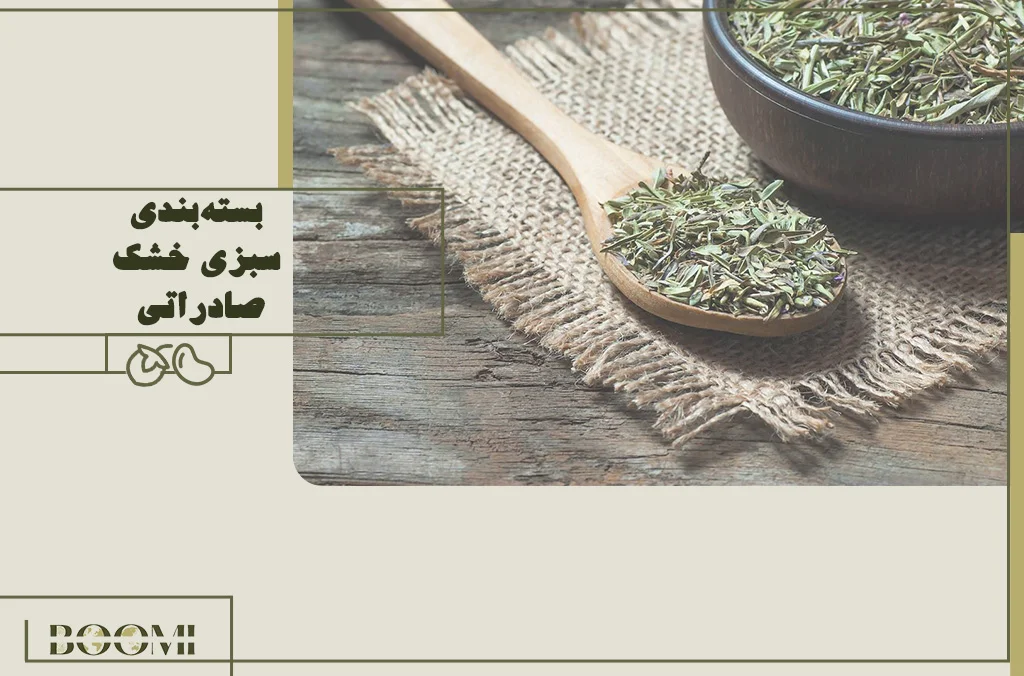With the increasing demand for natural products and the expansion of international markets, the export of dried herbs has become one of the important sectors of agricultural trade. One of the key factors for the success of this export is proper and standard packaging. The packaging of exported dried herbs not only helps maintain the quality and freshness of the products but also plays a significant role in attracting customers.
Proper packaging should be designed in a way that preserves the physical and chemical properties of dried herbs and prevents damage and contamination during transportation. Moreover, an attractive packaging design can capture customers’ attention and help establish brand identity.
In this article, we will explore the importance of packaging for exported dried herbs. Join us to learn more about this topic and take effective steps in the competitive world of dried herb exports.
The Importance of Packaging for Exported Dried Herbs
Packaging of exported dried herbs plays a crucial role in maintaining product quality. Choosing appropriate packaging methods can impact the added value and market demand. For more information about the specifications of exported tomato paste, please refer to the related article. In this section of the article, we will discuss the importance of packaging for exported dried herbs.
The Role of Packaging in Preserving Product Quality
Proper packaging of exported dried herbs is one of the key factors in maintaining the quality and shelf life of these products. Standard packaging prevents the entry of moisture, light, and contaminants into the package, preserving the aroma, flavor, and nutritional properties of the herbs. Using high-quality packaging materials and modern technologies, such as nanocoatings, helps extend the shelf life of these products.
Moreover, appropriate packaging prevents breakage and damage to the herbs during transportation. Given the global competition in the export market, paying attention to packaging details can make a significant difference for exporters and help gain customer trust.
The Impact of Packaging on Market Appeal
Packaging not only helps protect the product but also plays a significant role in marketing. Attractive and creative packaging can capture customers’ attention and influence their purchasing decisions. Modern designs and the use of colors and images that reflect the freshness and deliciousness of dried herbs can encourage buyers to make a purchase.
Additionally, providing information such as storage methods and usage instructions on the packaging can increase buyers’ awareness.
Types of Packaging for Exported Dried Herbs
The packaging of exported dried herbs is designed in various forms based on the type of product and market requirements. Choosing the right type of packaging helps maintain the quality, shelf life, and appeal of the products in target markets.
Packaging options such as vacuum and modified atmosphere packaging, paper and cardboard packaging, plastic and glass packaging, and multilayer packaging with combined features can provide maximum protection and quality. Selecting the appropriate type of packaging can play a crucial role in commercial success and increasing sales.
Vacuum and Modified Atmosphere Packaging
Vacuum and modified atmosphere packaging are suitable options for preserving the quality of exported dried herbs. This type of packaging works by removing the air inside the package and creating an oxygen-free environment, which prevents oxidation and spoilage, thereby extending the shelf life of the products.
Additionally, using protective gases such as nitrogen helps maintain the flavor and aroma of the herbs and prevents the entry of microbes and contaminants into the package. This packaging method is especially important and practical for export markets where transportation takes longer.
Moreover, the design and use of vacuum packaging, due to its ability to ensure product safety and freshness, can attract customers in the market.
Paper and Cardboard Packaging
Paper and cardboard packaging are one of the sustainable and eco-friendly options for exporting dried herbs. This type of packaging is easily recyclable and helps protect the environment. One of the key features of paper packaging is its breathability, which prevents moisture buildup and spoilage of dried herbs.
Attractive designs and beautiful prints on paper and cardboard can increase customer attention and reflect the quality of the products.
Plastic and Glass Packaging
Plastic and glass packaging are popular options for exporting dried herbs due to their numerous advantages. Plastic packaging is lightweight, durable, and transparent, making it an excellent choice for attracting customers. This type of packaging helps preserve the color and aroma of the herbs and is easy to carry and store.
On the other hand, glass packaging is known for its strength, elegance, and impermeability to moisture, significantly extending the shelf life of the products. This type of packaging not only minimizes the risk of contamination but also serves as a premium option that can capture buyers’ attention.
Multilayer Packaging
Multilayer packaging provides excellent protection and extended shelf life for exported dried herbs due to its combination of various materials. This type of packaging typically consists of plastic, paper, and aluminum layers, each serving a specific purpose in protecting the products.
The inner layers prevent moisture and oxygen from entering, while the outer layers provide physical protection. Multilayer packaging helps preserve the flavor and aroma of the products and prevents contamination. These features make multilayer packaging an excellent choice for exports.
Conclusion
Packaging of exported dried herbs is one of the key factors in attracting global markets. By choosing the most suitable packaging methods, we can ensure the quality and shelf life of the product. For a better understanding of the importance of packaging in the export of supermarket goods, please refer to the related article.

